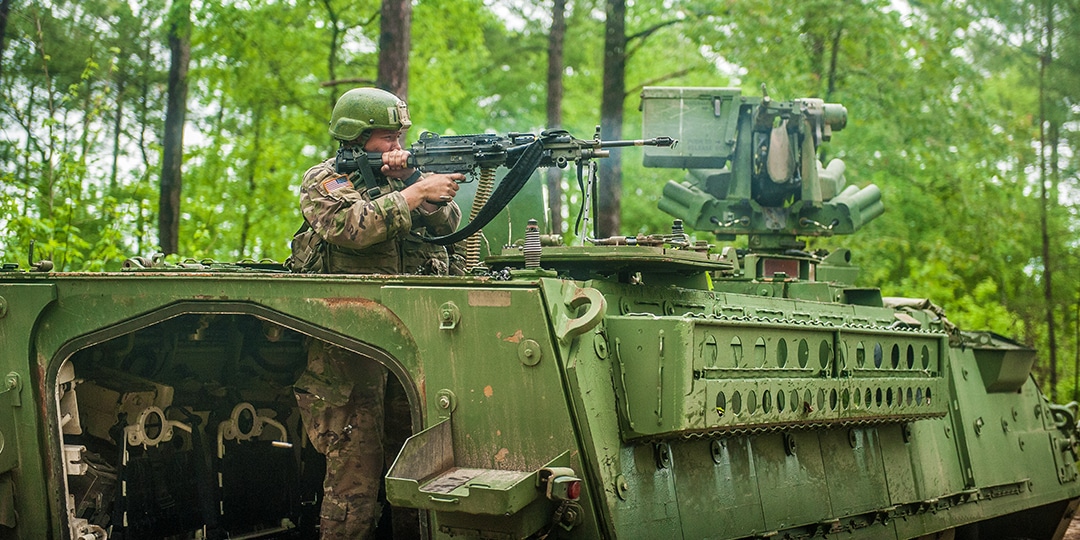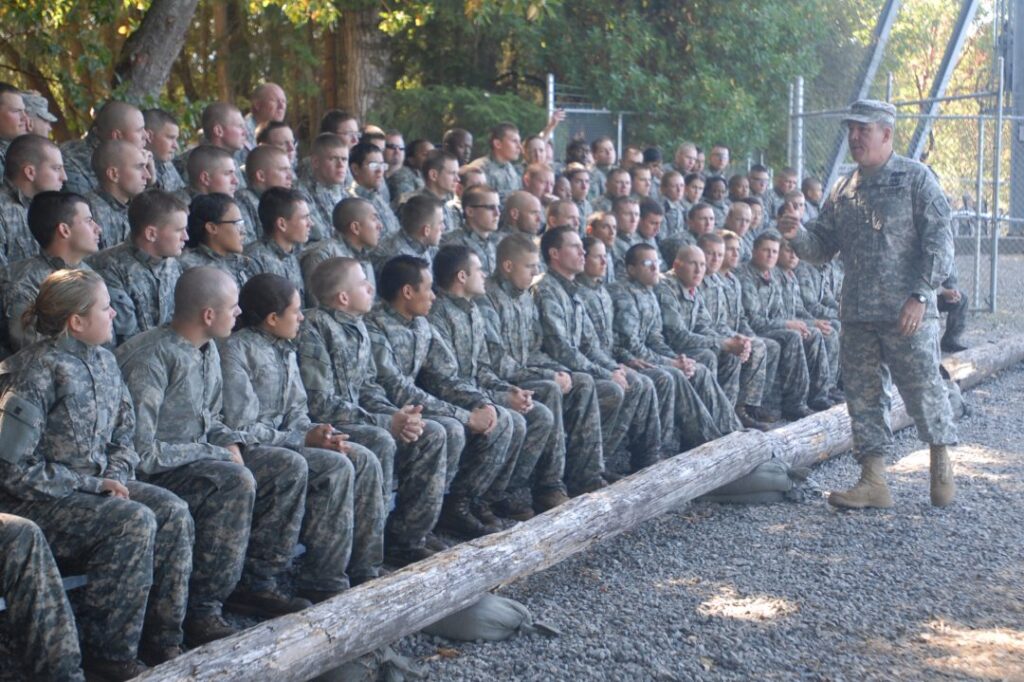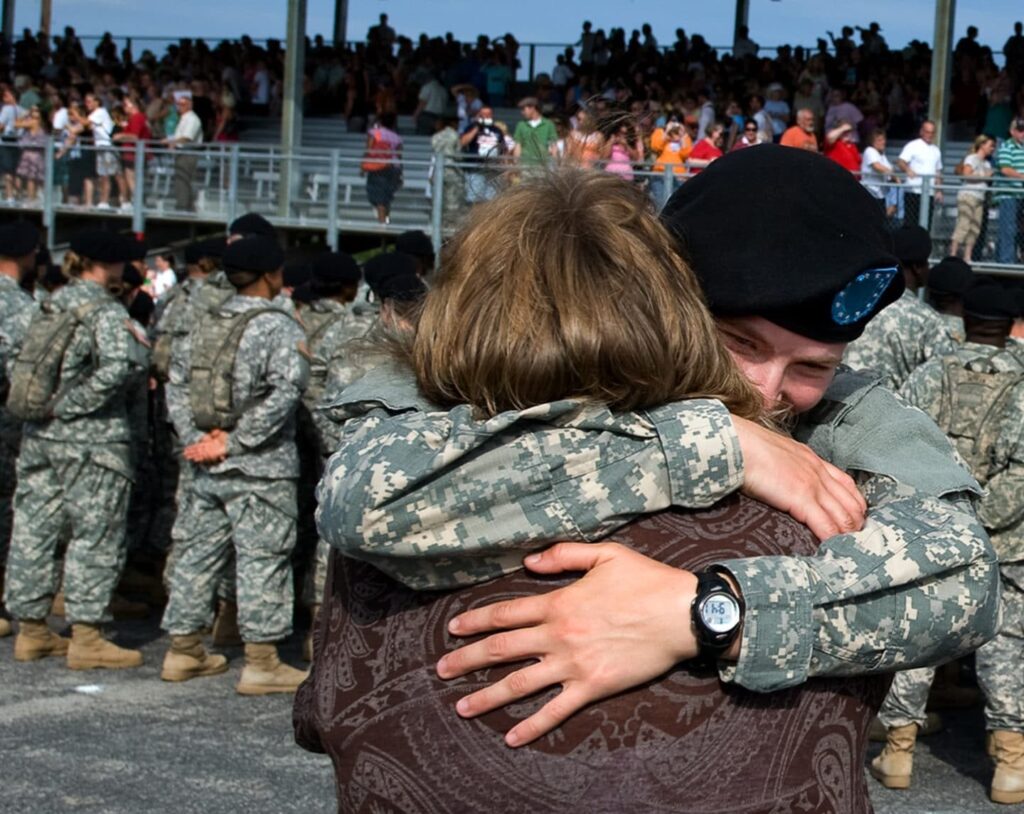For most Military Occupational Specialties (MOS) in the U.S. Army, Basic Combat Training (BCT) is ten weeks. When trainees graduate and become Soldiers, they go to Advanced Individual Training (AIT). However, there are eleven Army MOS’s in which trainees remain with the same unit (or Army Base) for both BCT and AIT – called One Station Unit Training (OSUT). Below we cover all you need to know about Army OSUT.
During OSUT there is no relocation and the Drill Sergeants remain the same and continue to instruct the trainees through AIT. This streamlines the training schedule and helps produce more camaraderie between trainees.
Here’s an Army MOS list of jobs that fall under OSUT.
Fort Moore OSUT Training

Nestled between Columbus, Georgia, and Phoenix City, Alabama, Ft. Moore is the home of the U.S. Army Maneuver Center of Excellence, Officer Candidate School, the Non-Commissioned Officers Academy, Airborne School, Armor School, Western Hemisphere Institute for Security Cooperation, elements of the 75th Ranger Regiment, 3rd Infantry Division, and Infantry School. The Infantry School is located at Sand Hill in Ft. Moore – and since 1918, it has served as the Home of the Infantry.
Infantry (11-series)
Infantry is the main land combat force and the backbone of the Army. The 14-week Army OSUT is also the starting point for many advanced schools such as: Special Forces, Ranger School, Sniper School, and Pathfinder School. Members of the Infantry possess tremendous discipline and high morale; readiness to accept a challenge and face danger; have an interest in weapons, ground tactics, and remain calm under stressful situations.
Fort Leonard Wood OSUT Training

Located in the Missouri Ozarks and due-west of the Mark Twain National Forest, Fort Leonard Wood conducts BCT and AIT for both combat and non-combat arms MOS. To that end, Fort Leonard Wood also provides OSUT support to five other MOS.
Cavalry Scout (19D)
A Calvary Scout is responsible for being the eyes and ears of the commander during battle. They engage the enemy in the field, track, and report their activity, and direct the employment of weapon systems to their locations. A cavalry scout requires 16 weeks of OSUT. Some of it takes place in the classroom, but most of it will be spent primarily in the field. Whether it’s taking part in squad maneuvers, target practice or war games, cavalry scouts are constantly refining their skills to keep themselves sharp.
M1 Armor Crewmember (19K)
An M1 Armor Crewmember is responsible for operating armored equipment such as the M1A2 Abrams to destroy enemy positions. As part of the tank and armor unit, they are ready to defend our country anywhere in the world. An M1 armor crewmember requires 15 weeks of OSUT. Part of this time is spent in the classroom and in the field under simulated combat.
Combat Engineer (12B)
Combat Engineers primarily supervise, serve or assist as a member of a team when they are tackling rough terrain in combat situations. They provide their expertise in areas such as mobility, survivability, and general engineering. That includes: constructing fighting positions, fixed or floating bridges, and defensive positions; detonate explosives; conduct route clearance operations; and install firing systems for demolition. A combat engineers requires 14 weeks of OSUT. Part of this time is spent in the classroom and part in the field with on-the-job instructions.
Bridge Crewmember (12C)
A Bridge Crewmember provides bridge and rafting support, whether that is assisting in the preparation or maintenance of a bridge site, rafts, or bridge operations for dry and wet gap crossing when a unit tackles rough terrain in combat situations. Bridge crewmembers requires 14 weeks of OSUT. Part of this time is spent in the classroom and part in the field with on-the-job instructions.
Military Police (31B)
A Military Police or MP protect the lives and property on Army installations by enforcing military laws and regulations. They also control traffic, prevent crime, and respond to all emergencies. An MP requires 20 weeks of OSUT and on-the-job instruction in police methods. Part of this time is spent in the classroom and in the field.
Fort Sill OSUT Training

Fort Sill, Oklahoma houses the Field Artillery (FA) School as the primary training facility for field artillery soldiers and Marines worldwide. Although, the Army considers Field Artillery (13-series MOS) as OSUT, they differ from other OSUT units because there is a graduation ceremony held after the ten-week BCT – some soldiers are authorized leave (totally discretionary) before arriving at AIT there on Ft. Sill.
Therefore, since soldiers are completing BCT and AIT together – separated with a graduation ceremony – the Army still considers this OSUT. Field Artillery soldiers provide fire support for the force, support unit training and readiness, and maintain installation infrastructure and services. Their primary mission is to support infantry and tank units in combat by providing effective fire support on the enemy.
Cannon Crewmembers (13B)
Canon Crewmembers work the howitzer cannons that support infantry and tank units during combat and play crucial roles in the Army’s success on the battlefield. Canon crewmembers require ten-weeks of BCT and seven weeks of AIT. Part of this time is spent in the classroom and part in the field under simulated combat conditions.
Field Artillery Firefinder Radar Operators (13R)
Field Artillery Firefinder Radar Operators are responsible for detecting enemy forces and alerting friendly field units using specialized radars that can detect various objects and their locations. 13-Romeos require ten weeks of BCT and eight weeks of AIT with on-the-job instruction. Part of this time is spent in the classroom and on firefinder equipment.
Field Artillery Surveyor/Meteorological Crewmembers (13T)
are responsible for monitoring weather conditions for the field artillery team. Their role is crucial in supporting accurate missile launches and providing critical data to infantry and tank units during combat. 13-Tangos require ten weeks of BCT and eight weeks of AIT with on-the-job instruction. Part of this time is spent in the classroom and in the field under simulated combat conditions.
Multiple Launch Rocket System (MLRS) Crewmember (13M)
is responsible for operating and maintaining MLRS and providing support to infantry and tank units with cannon artillery during combat. 13-Mikes require ten weeks of BCT and four weeks of AIT. Part of this time is spent in the classroom and in the field under simulated combat conditions.
Fire Control Specialists (13J)
integrate tactical battlefield information from multiple users and sensors through a network of Army automated battle command systems. Fire Control Specialists require ten weeks of BCT and seven weeks of AIT with on-the-job instructions. Part of this time is spent in the classroom and part in the field under simulated combat conditions.
Fire Support Specialists are responsible for the intelligence activities of the Army’s FA team. They set up and operate communications systems, assist in the preparation of fire support plans, coordinates, and targets; and identify target locations. Fire Support Specialists require ten weeks of BCT and six weeks of AIT with on-the-job instructions. Part of this time is spent in the classroom and part in the field under simulated combat conditions.
Are you heading to Army Basic Training? Learn about the Army Core Values that you will want to know before arriving at training.





